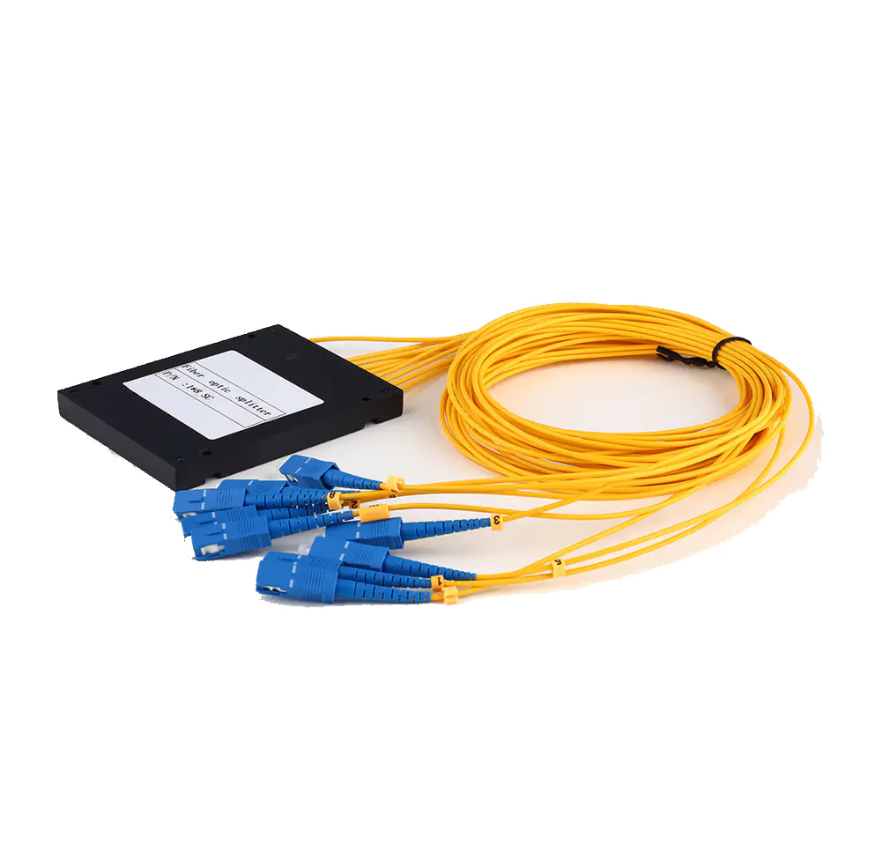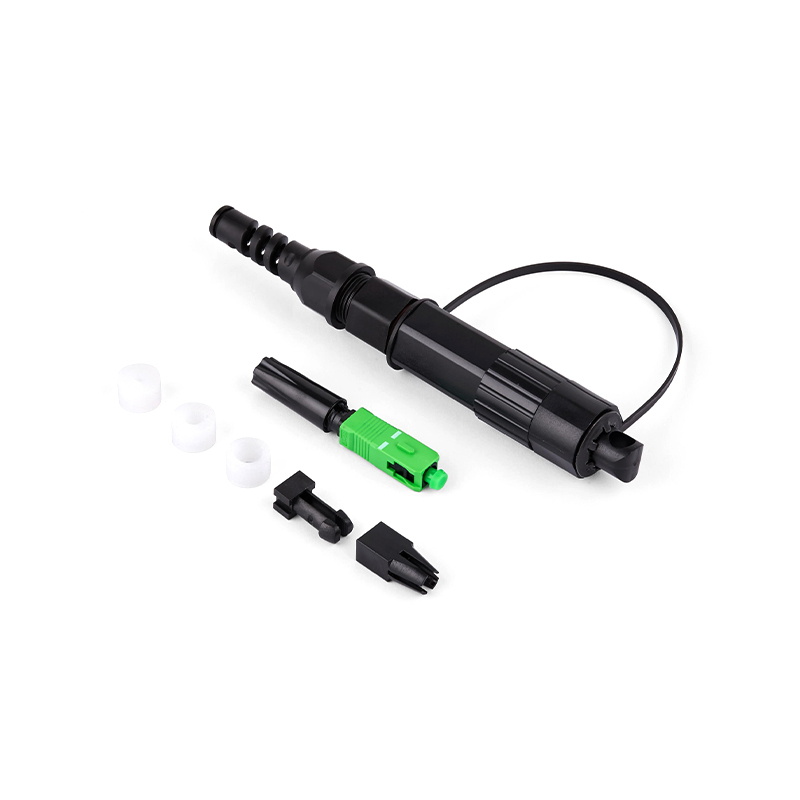What are the types of fiber optic PLC splitters?
2025-11-21
In building high-performance fiber optic communication networks (especially passive optical networks (PONs) such as EPON and GPON), fiber optic PLC splitters (PLC splitters, planar waveguide circuit splitters) are crucial passive devices. Manufactured based on planar waveguide technology, they can distribute the optical signal power from a single optical fiber to multiple fiber output ports according to a predetermined ratio or evenly, achieving multi-functionality from a single optical signal.
Due to their high integration, small size, low insertion loss, and high reliability, fiber optic PLC splitters have become core equipment in FTTx (Fiber to the Home) deployments, used to connect the central office (OLT) with multiple user terminals (ONUs) to achieve network coverage and bandwidth sharing.
Content
In-depth exploration: Main types of fiber optic PLC splitters
fiber optic PLC splitters can be classified according to their packaging, port configuration, and structural characteristics to meet different installation environments and application requirements.
1. Classification by Packaging Method (Most Common Type)
Fiber optic PLC splitters are primarily classified according to their packaging method, which determines their applicability in different installation environments and application scenarios.
Bare Fiber PLC Splitters: These splitters have the simplest structure and smallest size. The splitter chip is directly connected to the optical fiber at both ends, without additional protective sheathing. They are suitable for use in fiber optic distribution boxes (ODFs) or compact splitter boxes, mainly for modular integration.
Ribbon PLC Splitters: These splitters are packaged in miniature steel tubing, providing some protection for the splitter chip and optical fiber. The optical fiber is bundled and pre-lengthened for easy handling. They are suitable for use in fiber optic splice boxes or smaller junction boxes, enabling cable protection and flexible splicing.
Box-Type PLC Splitters: These splitters are packaged in a robust ABS plastic box, providing reliable protection, and typically come with standardized interfaces (such as SC/APC or SC/UPC). Due to their ease of deployment, they are widely used in optical distribution boxes, fiber optic junction boxes, or directly mounted on racks.
Rack-Mounted PLC Splitters: This type uses a standard 19-inch rack-mount design, typically 1U or 2U in height, integrating multiple splitter modules into a single chassis. They are suitable for central office (CO) rooms or large data centers, facilitating centralized management and high-capacity deployment.
2. Classification by Splitting Ratio/Port Configuration
The splitting ratio of a fiber optic PLC splitter is one of its core parameters, representing the proportion of optical signal distribution. Common types include:
Uniform Splitting Ratio: 1*N or 2*N structure, where N is the number of output ports. Examples include 1*8, 1*16, 1*32, or 1*64. This means that the input optical power will be evenly distributed across N output ports.
Non-Uniform Splitting Ratio: While PLC splitters are inherently uniformly splitting, this sometimes refers to scenarios where unequal power output is achieved through cascading or customization in certain applications.
3. Classification by Operating Wavelength
Although most fiber optic PLC splitters operate in the 1260nm-1650nm broadband range, in PON networks, they are primarily optimized for key wavelengths such as 1310nm (uplink), 1490nm (downlink), and 1550nm (video/CATV) to ensure extremely low insertion loss and polarization-dependent loss.
The variety of types and flexible packaging options available for fiber optic PLC splitters allows them to perfectly adapt to various environments, from the central equipment room to the user's doorstep. When selecting a fiber optic PLC splitter, the most suitable packaging type should be determined based on the specific requirements of the project (such as installation space, number of ports, and protection level).











